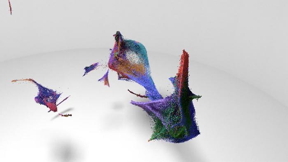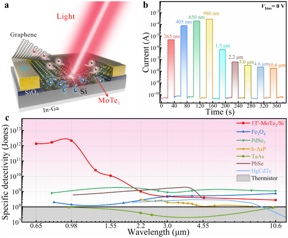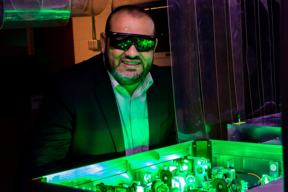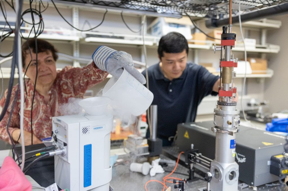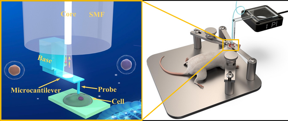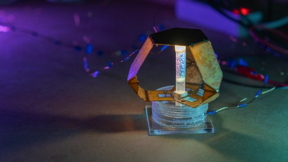Home > Press > New nanoparticles deliver therapy brain-wide, edit Alzheimer’s gene in mice: UW researchers have found a way to move gene therapies through the blood-brain barrier, a crucial step for brain-wide CRISPR treatments of disorders like Alzheimer's and Parkinson's disease
Abstract:
Gene therapies have the potential to treat neurological disorders like Alzheimer’s and Parkinson’s diseases, but they face a common barrier — the blood-brain barrier. Now, researchers at the University of Wisconsin–Madison have developed a way to move therapies across the brain’s protective membrane to deliver brain-wide therapy with a range of biological medications and treatments.
New nanoparticles deliver therapy brain-wide, edit Alzheimer’s gene in mice: UW researchers have found a way to move gene therapies through the blood-brain barrier, a crucial step for brain-wide CRISPR treatments of disorders like Alzheimer's and Parkinson's disease
Madison. WI | Posted on January 20th, 2023“There is no cure yet for many devastating brain disorders,” says Shaoqin “Sarah” Gong, UW–Madison professor of ophthalmology and visual sciences and biomedical engineering and researcher at the Wisconsin Institute for Discovery. “Innovative brain-targeted delivery strategies may change that by enabling noninvasive, safe and efficient delivery of CRISPR genome editors that could, in turn, lead to genome-editing therapies for these diseases.”
CRISPR is a molecular toolkit for editing genes (for example, to correct mutations that may cause disease), but the toolkit is only useful if it can get through security to the job site. The blood-brain barrier is a membrane that selectively controls access to the brain, screening out toxins and pathogens that may be present in the bloodstream. Unfortunately, the barrier bars some beneficial treatments, like certain vaccines and gene therapy packages, from reaching their targets because in lumps them in with hostile invaders.
Injecting treatments directly into the brain is one way to get around the blood-brain barrier, but it’s an invasive procedure that provides access only to nearby brain tissue.
“The promise of brain gene therapy and genome-editing therapy relies on the safe and efficient delivery of nucleic acids and genome editors to the whole brain,” Gong says.
In a study recently published in the journal Advanced Materials, Gong and her lab members, including postdoctoral researcher and first author of the study Yuyuan Wang, describe a new family of nano-scale capsules made of silica that can carry genome-editing tools into many organs around the body and then harmlessly dissolve.
By modifying the surfaces of the silica nanocapsules with glucose and an amino acid fragment derived from the rabies virus, the researchers found the nanocapsules could efficiently pass through the blood-brain barrier to achieve brain-wide gene editing in mice. In their study, the researchers demonstrated the capability of the silica nanocapsule’s CRISPR cargo to successfully edit genes in the brains of mice, such as one related to Alzheimer’s disease called amyloid precursor protein gene.
Because the nanocapsules can be administered repeatedly and intravenously, they can achieve higher therapeutic efficacy without risking more localized and invasive methods.
The researchers plan to further optimize the silica nanocapsules’ brain-targeting capabilities and evaluate their usefulness for the treatment of various brain disorders. This unique technology is also being investigated for the delivery of biologics to the eyes, liver and lungs, which can lead to new gene therapies for other types of disorders.
####
For more information, please click here
Contacts:
Media Contact
Caitlin Henning
University of Wisconsin-Madison
Expert Contact
Shaoqin “Sarah” Gong
University of Wisconsin–Madison
Copyright © University of Wisconsin–Madison
If you have a comment, please Contact us.Issuers of news releases, not 7th Wave, Inc. or Nanotechnology Now, are solely responsible for the accuracy of the content.
| Related Links |
| Related News Press |
News and information
![]() Manufacturing advances bring material back in vogue January 20th, 2023
Manufacturing advances bring material back in vogue January 20th, 2023
![]() Researchers demonstrate co-propagation of quantum and classical signals: Study shows that quantum encryption can be implemented in existing fiber networks January 20th, 2023
Researchers demonstrate co-propagation of quantum and classical signals: Study shows that quantum encryption can be implemented in existing fiber networks January 20th, 2023
![]() Approaching the terahertz regime: Room temperature quantum magnets switch states trillions of times per second January 20th, 2023
Approaching the terahertz regime: Room temperature quantum magnets switch states trillions of times per second January 20th, 2023
![]() Correlated rattling atomic chains reduce thermal conductivity of materials January 20th, 2023
Correlated rattling atomic chains reduce thermal conductivity of materials January 20th, 2023
Possible Futures
![]() Polymer p-doping improves perovskite solar cell stability January 20th, 2023
Polymer p-doping improves perovskite solar cell stability January 20th, 2023
![]() Vertical electrochemical transistor pushes wearable electronics forward: Biomedical sensing is one application of efficient, low-cost transistors January 20th, 2023
Vertical electrochemical transistor pushes wearable electronics forward: Biomedical sensing is one application of efficient, low-cost transistors January 20th, 2023
![]() Approaching the terahertz regime: Room temperature quantum magnets switch states trillions of times per second January 20th, 2023
Approaching the terahertz regime: Room temperature quantum magnets switch states trillions of times per second January 20th, 2023
Nanomedicine
![]() Team undertakes study of two-dimensional transition metal chalcogenides Important biomedical application, including biosensing December 9th, 2022
Team undertakes study of two-dimensional transition metal chalcogenides Important biomedical application, including biosensing December 9th, 2022
![]() Cutting-edge combination shows promise in patients with chemotherapy-resistant urothelial cancer November 4th, 2022
Cutting-edge combination shows promise in patients with chemotherapy-resistant urothelial cancer November 4th, 2022
Discoveries
![]() Manufacturing advances bring material back in vogue January 20th, 2023
Manufacturing advances bring material back in vogue January 20th, 2023
![]() Polymer p-doping improves perovskite solar cell stability January 20th, 2023
Polymer p-doping improves perovskite solar cell stability January 20th, 2023
![]() Approaching the terahertz regime: Room temperature quantum magnets switch states trillions of times per second January 20th, 2023
Approaching the terahertz regime: Room temperature quantum magnets switch states trillions of times per second January 20th, 2023
Announcements
![]() Manufacturing advances bring material back in vogue January 20th, 2023
Manufacturing advances bring material back in vogue January 20th, 2023
![]() Researchers demonstrate co-propagation of quantum and classical signals: Study shows that quantum encryption can be implemented in existing fiber networks January 20th, 2023
Researchers demonstrate co-propagation of quantum and classical signals: Study shows that quantum encryption can be implemented in existing fiber networks January 20th, 2023
Interviews/Book Reviews/Essays/Reports/Podcasts/Journals/White papers/Posters
![]() Manufacturing advances bring material back in vogue January 20th, 2023
Manufacturing advances bring material back in vogue January 20th, 2023
![]() Researchers demonstrate co-propagation of quantum and classical signals: Study shows that quantum encryption can be implemented in existing fiber networks January 20th, 2023
Researchers demonstrate co-propagation of quantum and classical signals: Study shows that quantum encryption can be implemented in existing fiber networks January 20th, 2023
![]() Approaching the terahertz regime: Room temperature quantum magnets switch states trillions of times per second January 20th, 2023
Approaching the terahertz regime: Room temperature quantum magnets switch states trillions of times per second January 20th, 2023
![]() Correlated rattling atomic chains reduce thermal conductivity of materials January 20th, 2023
Correlated rattling atomic chains reduce thermal conductivity of materials January 20th, 2023
Nanobiotechnology
![]() Team undertakes study of two-dimensional transition metal chalcogenides Important biomedical application, including biosensing December 9th, 2022
Team undertakes study of two-dimensional transition metal chalcogenides Important biomedical application, including biosensing December 9th, 2022
![]() Cutting-edge combination shows promise in patients with chemotherapy-resistant urothelial cancer November 4th, 2022
Cutting-edge combination shows promise in patients with chemotherapy-resistant urothelial cancer November 4th, 2022
- SEO Powered Content & PR Distribution. Get Amplified Today.
- Platoblockchain. Web3 Metaverse Intelligence. Knowledge Amplified. Access Here.
- Source: http://www.nanotech-now.com/news.cgi?story_id=57283
- 10
- 3d
- a
- access
- accuracy
- Achieve
- across
- administered
- advanced
- Advanced materials
- advances
- Alzheimer’s
- and
- Application
- around
- author
- back
- barrier
- bars
- because
- being
- beneficial
- biomedical
- blood
- body
- Brain
- brains
- bring
- called
- Can Get
- capabilities
- capsules
- Cargo
- carry
- Cause
- Cells
- Center
- certain
- CGI
- chains
- challenge
- change
- COM
- combination
- comment
- Common
- Compound
- conducting
- conductivity
- content
- controls
- could
- create
- CRISPR
- crucial
- Crystal
- cure
- December
- deliver
- delivery
- demonstrate
- demonstrated
- Derived
- describe
- devastating
- develop
- developed
- develops
- difficult
- directly
- discover
- discovery
- Disease
- diseases
- disorders
- efficient
- efficiently
- Electronic
- Electronics
- enabling
- encryption
- Engineering
- Ether (ETH)
- evaluate
- example
- existing
- Eyes
- Face
- family
- feat
- fight
- First
- Forward
- found
- from
- further
- GAS
- gene editing
- genome
- get
- gif
- Growth
- higher
- highly
- How
- HTTPS
- implemented
- implications
- important
- improves
- in
- Inc.
- Including
- information
- Institute
- IT
- January
- Japan
- Job
- journal
- lab
- lead
- linked
- links
- Liver
- Lungs
- made
- Magnets
- many
- material
- materials
- Members
- metal
- methods
- mice
- molecular
- molecule
- more
- move
- nanotechnology
- net
- Neutral
- New
- news
- November
- october
- ONE
- opens
- Optimize
- organic
- Other
- packages
- participation
- path
- patients
- PHP
- plan
- plato
- Plato Data Intelligence
- PlatoData
- please
- Post
- posted
- potential
- precursor
- present
- Professor
- promise
- Protective
- Protein
- Proteins
- provide
- provides
- published
- Quantum
- range
- recently
- reduce
- regime
- related
- Releases
- REPEATEDLY
- researcher
- researchers
- responsible
- Results
- return
- risking
- Room
- safe
- Save
- SCIENCES
- scientists
- screening
- Search
- security
- Share
- Shows
- signals
- site
- solar
- some
- start
- States
- Step
- strategies
- Study
- submit
- Successfully
- such
- Switch
- targets
- team
- Technology
- The
- their
- Therapeutic
- therapy
- thermal
- Through
- times
- to
- toolkit
- tools
- transition
- treat
- treating
- treatment
- trillions
- TURN
- types
- unique
- university
- unprecedented
- us
- use
- vaccines
- various
- virus
- Water
- Wave
- wearable
- which
- Wisconsin
- without
- Yahoo
- zephyrnet











